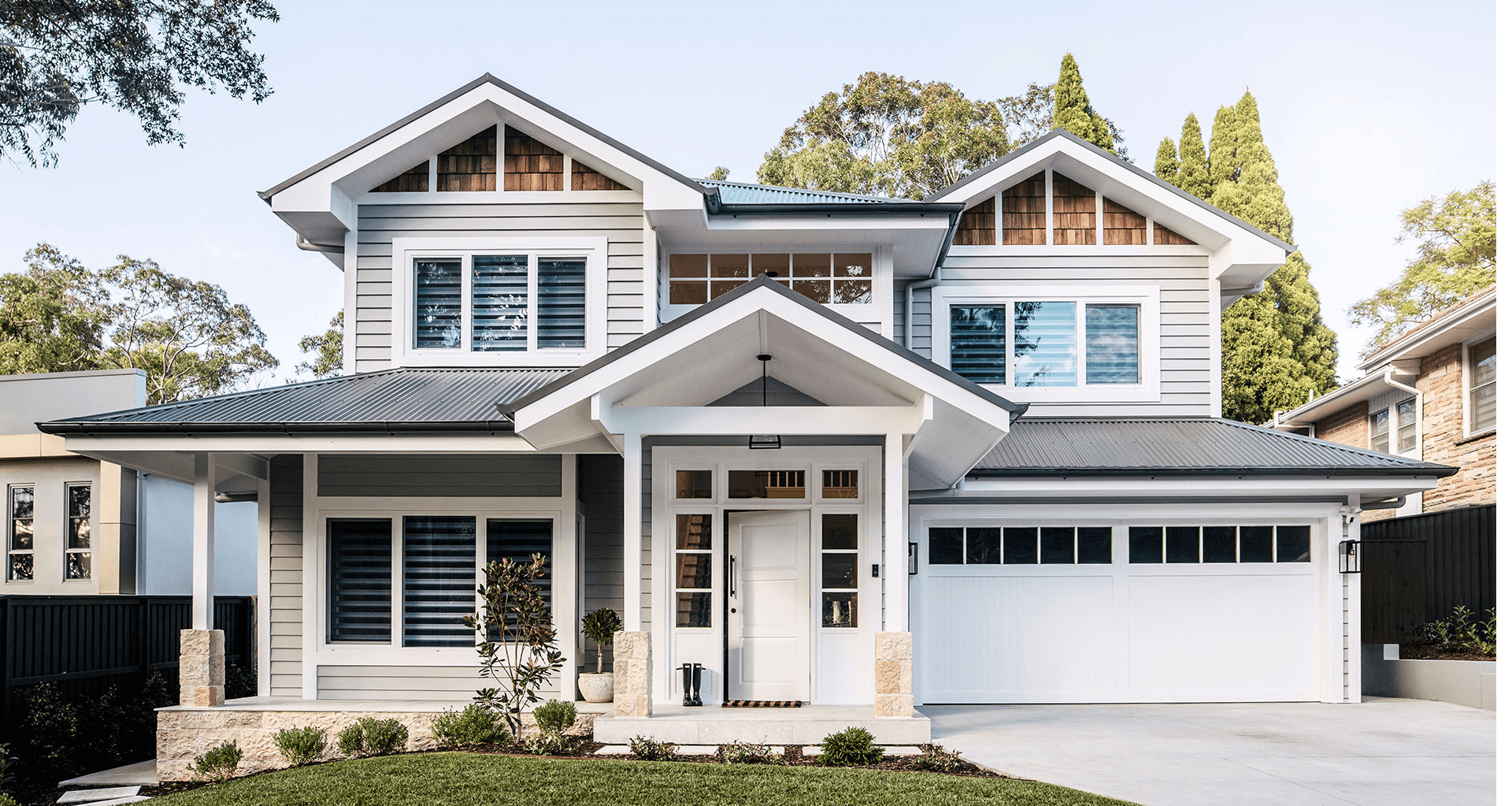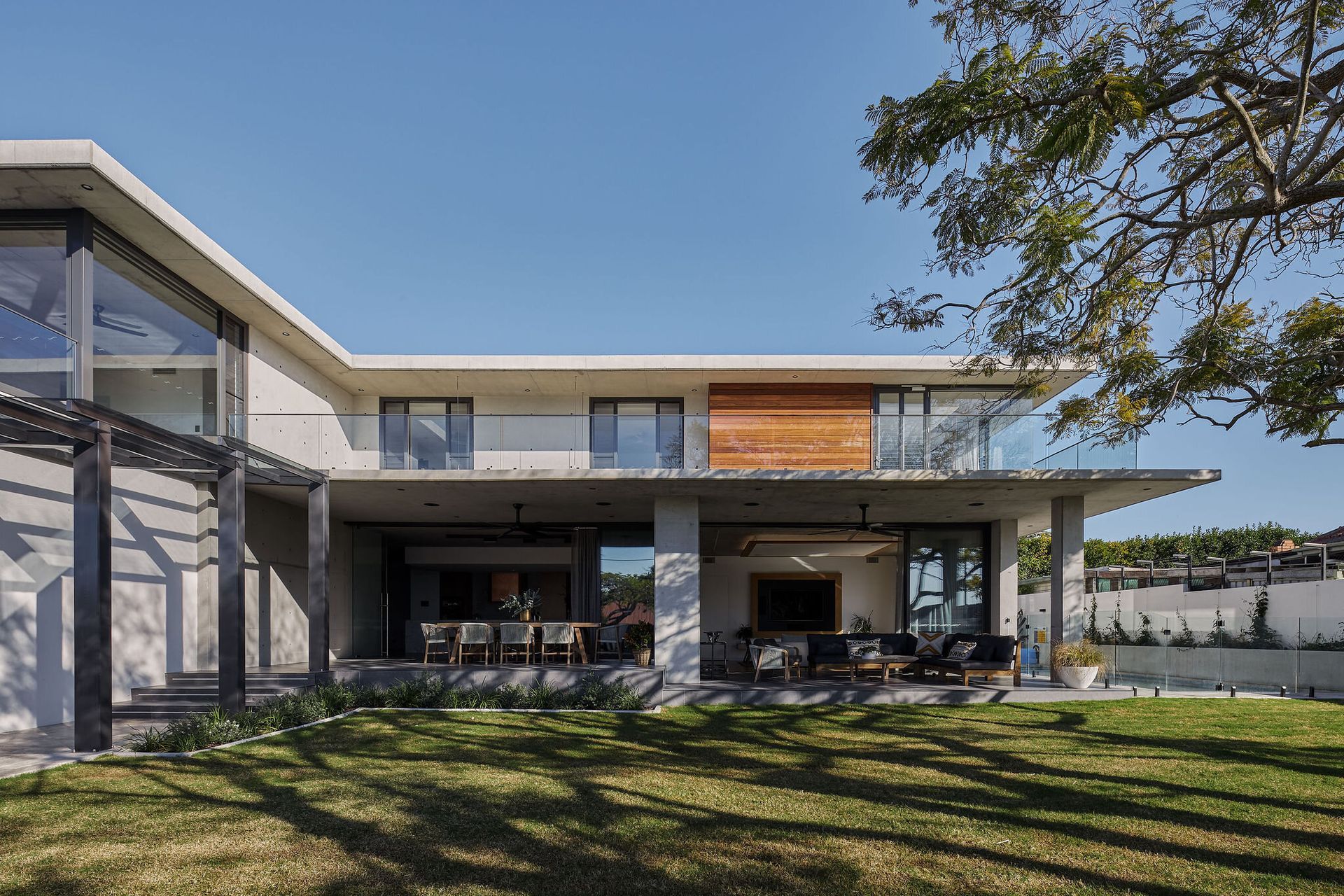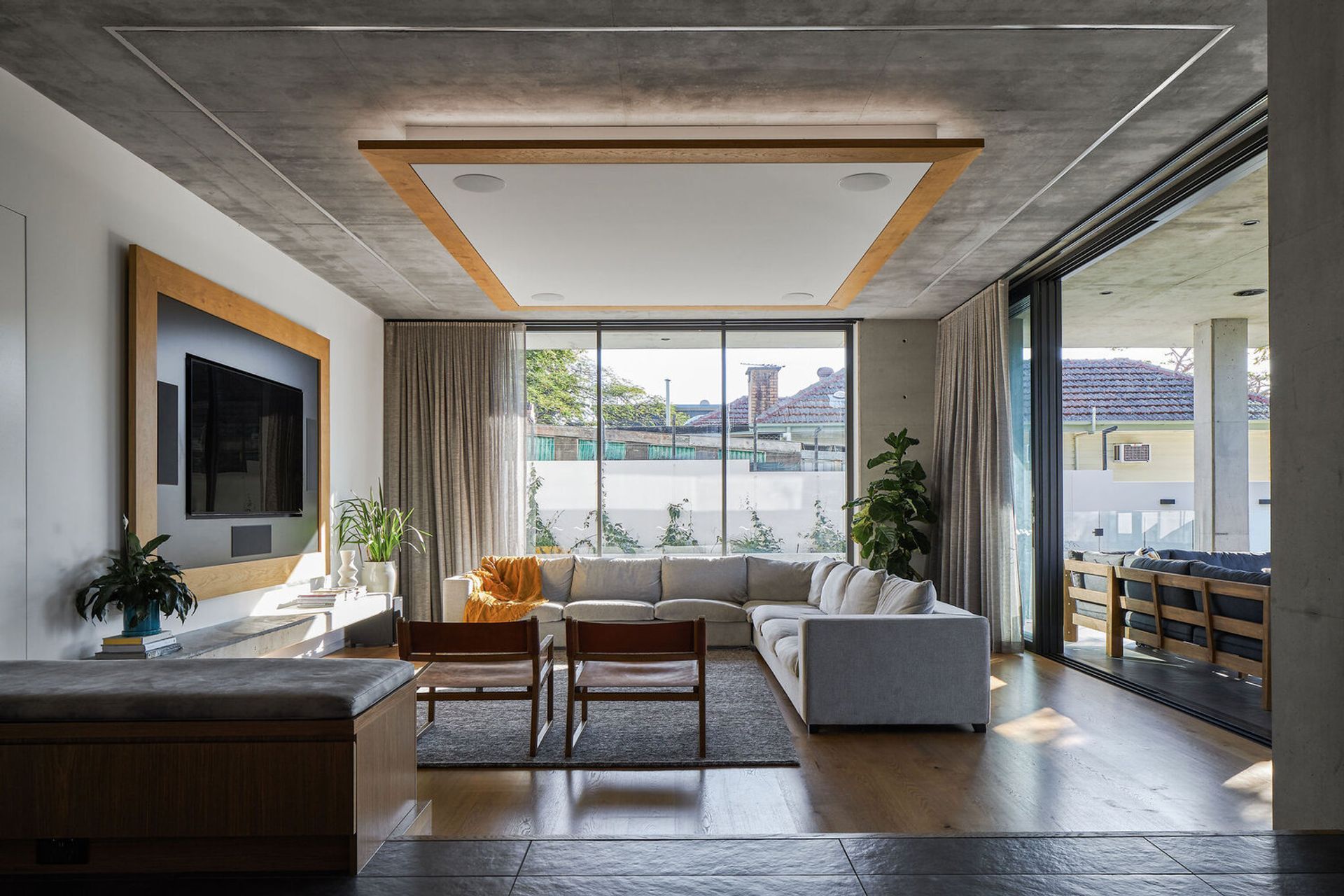Why build a home in Australia? The benefits, challenges and solutions

From financial benefits to lifestyle improvements, building a home provides opportunities beyond simply owning a property. Customisation, the freedom to choose the perfect location, and the ability to integrate modern technology are some unique advantages. By building your home from the ground up, you’ll have complete control to design a home that fits your exact vision, delivering its own pride and satisfaction.
1. Financial benefits and long-term investment
Building a home offers financial advantages through equity and potential appreciation. Custom homes also tend to appreciate more due to unique design and location choices, often yielding a higher return on investment if you decide to sell.
Stamp duty exemptions
One of the key financial benefits of building a home in Australia is the potential to save on stamp duty. When buying an established home, stamp duty is calculated on both the house and the land. However, if you purchase land to build a house, stamp duty is only applied to the value of the land, not the building itself, which can result in significant savings. This is particularly advantageous in states like New South Wales, where stamp duty rates are typically higher.
2. Future-proofing
You can plan for future trends and evolving lifestyle needs when you build your own home. Spaces can be designed to easily transform into home offices, gyms, or extra bedrooms, ensuring your home grows with you. Additionally, you can incorporate infrastructure for upcoming technologies, such as solar panels, electric vehicle charging stations, and smart home systems, making your home more energy-efficient and tech-ready. Future-proofing your home involves incorporating smart design elements such as wider doorways, step-free entrances, and accessible bathrooms. These thoughtful features ensure your home stays functional and comfortable as your needs evolve, allowing seamless transitions through different life stages without expensive renovations or relocation. By adopting this forward-thinking approach, you not only enhance the long-term livability of your home but also increase its overall value.
3. Environmental impact and sustainability
Building from the ground up allows you to make eco-friendly choices that reduce your environmental footprint. You can select sustainable materials, install energy-efficient windows and appliances, and even design the home to maximise natural light and airflow. These choices contribute to a healthier planet and lead to long-term savings through reduced energy consumption. Those aiming to build a zero net-carbon home, a dwelling that produces as much renewable energy as it consumes over the course of a year, can reduce greenhouse gas emissions by five to eight and a half tons per year.


4. Customisation and personalisation
Customisation and personalisation are among the most compelling reasons to build a home, allowing you to design every detail to suit your lifestyle and preferences. From the overall layout to finishes like cabinetry, flooring, and fixtures, you have full control over the look and functionality of your space. This flexibility extends beyond aesthetics, enabling you to create rooms with specific purposes or future adaptability, such as a home office that can later become a guest room. By choosing premium materials, incorporating personal touches and collaborating with the right architect, you ensure your home reflects your unique tastes and needs, offering immediate comfort and long-term value.
Related article: What do architects do? An essential read before your next project
5. Multigenerational and aging-in-place design
Building a custom home offers the invaluable opportunity to future-proof your living space for evolving family dynamics and long-term needs. By incorporating thoughtful design elements such as in-law suites, wider doorways, step-free entrances, and single-level living, you can create a home that accommodates ageing parents, returning adult children or even future generations. These features not only enhance accessibility and comfort but also promote independence for family members with mobility challenges. This forward-thinking approach provides peace of mind and enhances the long-term value of your home, making it a place where the family can thrive together for years to come.
6. Material and product selection
Having control over the quality of materials when building your home is a major advantage, allowing you to ensure superior construction from the ground up. Unlike buying an existing home, where hidden problems like outdated wiring, poor insulation, or subpar building practices can lead to costly repairs, a custom build allows you to select durable, energy-efficient materials that meet modern standards. From choosing high-grade insulation for better energy efficiency to installing advanced heating and cooling systems, every choice can enhance the longevity, safety, and sustainability of your home. This attention to quality reduces future maintenance costs and improves the home's overall value and performance, ensuring it stands the test of time.
Related article: Sustainable cladding materials - a breakdown

7. Tech-forward homes
Building your own home allows you to integrate the latest smart home technologies right from the start. From automated lighting and temperature controls to built-in security systems and home entertainment setups, tech-forward homes offer convenience, energy efficiency, and enhanced security. Incorporating these technologies into a new build is often easier and more cost-effective than retrofitting an older home, which, according to the University of Melbourne, costs between $42,000 - $63,000 for a typical detached house and $9,000 - $18,000 for a typical semi-detached house.
8. Emotional and psychological benefits
It's a deeply fulfilling experience to build your own home as it offers a sense of pride and accomplishment that buying a preexisting home cannot match. Seeing your vision come to life—from the floor plan to the finishing touches—creates a strong emotional connection to the space. This emotional investment can enhance your overall happiness and satisfaction with your living environment. Complemented by a talented interior designer, you can mould the inside of your home to maximise relaxation.
9. Location flexibility
Building a home offers unparalleled freedom in choosing the perfect location that aligns with your lifestyle, needs, and long-term goals. Whether you dream of a serene rural setting with expansive land or a vibrant neighbourhood close to schools, shops, and transport, you can select a plot that truly complements your daily life. This flexibility allows you to avoid compromises often faced when buying an existing home, such as settling for a less-than-ideal area or proximity to key amenities. Additionally, building in a location that holds future development potential or offers environmental benefits, such as being near green spaces or coastal areas, can significantly enhance the long-term value of your property. Whether you're seeking tranquillity, connectivity, or a mix of both, building your own home allows you to create a living environment that meets your current needs and evolves with your lifestyle and the surrounding community over time.


Challenges to expect when building a house
Building your own home is a rewarding but sometimes challenging journey. While it offers significant benefits, such as customisation and long-term value, the process can be tough. Understanding the potential hurdles like budget overruns and permit delays can help you avoid setbacks and ensure a smoother experience.
1. Budget management
Staying within budget is one of the most common challenges when building a home. Costs can quickly escalate due to unexpected expenses like rising material prices, design changes, or delays that require additional labour. Budget overruns are often caused by underestimating the cost of specific elements or encountering unforeseen issues during construction.
- Solution: Create a detailed budget with a contingency fund, 10-20% of the total budget, to cover unforeseen costs. Regularly review expenses with your builder to ensure transparency and make adjustments where necessary.
2. Lengthy build process
Building a home typically takes longer than buying one, with the phase taking about six months to twelve months and potentially more for a home in Australia. However, this will vary depending on the design's complexity and the home's size. Weather delays, supply chain disruptions, and labour shortages can further extend the timeline.
- Solution: Set a realistic timeline to plan for possible delays. Communicate frequently with your builder to track progress and address any issues promptly. Proper planning and patience are key to avoiding frustration during the build.
3. Zoning restrictions
Zoning laws vary by region and dictate where and what kind of structure can be built. Local zoning restrictions may limit the height of the building, and the number of stories, or even dictate specific design aesthetics.
- Solution: Before purchasing land or starting construction, ensure that your project complies with local zoning regulations. Consulting with a local architect or contractor familiar with the area can help navigate zoning issues early on and prevent costly design changes later.
4. Permit complexities
Obtaining the necessary building permits can be a complex and time-consuming process, especially if your home design doesn’t align with local regulations or if there are environmental factors to consider. Delays in securing permits can slow down construction.
- Solution: Work with an experienced builder or architect who understands the local permitting process. Apply for permits early and ensure all required documents, plans, and approvals are submitted correctly to avoid delays.
5. Climate considerations
Australia’s diverse climate poses challenges depending on the location. Homes built in bushfire-prone areas, for example, must comply with Bushfire Attack Level (BAL) regulations, while homes in tropical regions need to withstand cyclones, flooding and heavy rainfall.
- Solution: Design your home with the local climate in mind. For example, use fire-resistant materials in high-risk areas, install proper drainage systems in flood-prone regions, and incorporate ventilation and insulation for extreme heat. Understanding the local climate and building accordingly ensures long-term safety and comfort.
6. Labour and trade shortages
Australia is currently experiencing a shortage of skilled tradespeople, especially in rural areas. This can lead to delays in construction, increased labour costs, and difficulty securing contractors for specific tasks.
- Solution: Start sourcing tradespeople as early as possible and book your contractors well in advance. Working with a reputable builder who has established relationships with trades can help mitigate this issue. Flexibility in scheduling can also be essential to navigating labour shortages.


Cost of building a home in Australia
The cost of building a home in Australia can vary significantly depending on location, size, design complexity, and materials used. On average, building a home in metropolitan areas may range from $1,400 to $4,000 per square metre, with the average build costing between $347,200 to $1,463,200. Additional costs, such as permits, zoning fees, and labour shortages, can further impact the total price. Factors like energy-efficient features and customisations can also increase costs, so planning carefully and including a contingency fund for unexpected expenses is important.
Home builders grants
Several grants and rebates are available in Australia to help prospective homeowners manage the cost of building a new home. These grants differ across states and territories, with eligibility and amounts varying based on location, the value of the home, and whether the applicant is a first-time buyer.
- First-home-owner grant: This is a nationwide grant for first-time buyers, varying by state, offering up to $50,000 for new homes or significant renovations.
- Environmental and sustainability grants: A range of rebates and incentives for energy-efficient, renewable, and water-saving initiatives in new homes across various states, such as the New South Wales Energy Saver Program.

Build your home with confidence
Building a home in Australia presents a unique opportunity to create a space tailored to your needs while offering financial benefits like long-term investment potential, customisation, and energy efficiency. Although challenges such as budget management, navigating zoning and permits, and dealing with labour shortages exist, careful planning can mitigate these issues. Grants like the First Time Home Owner and Environmental and Sustainability grants provide additional support, making home building more accessible. Ultimately, building your own home provides practical advantages and the emotional satisfaction of creating a home that reflects your vision and lifestyle, making it a rewarding and fulfilling choice.
Related article: When do you need an architect? A comprehensive guide for your next project
